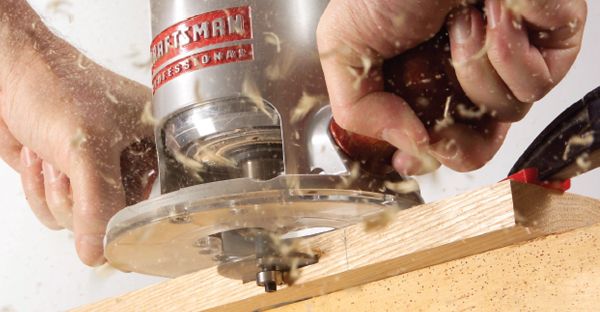Page Contents
Quick Answer
No, a router cannot be used as a direct replacement for a biscuit joiner. While both tools cut slots and grooves, there are some key differences that make biscuit joiners better suited for joining wood. Biscuit joiners cut curved slots that match the shape of biscuits, allowing the biscuits to swell and create a tight joint. Routers cut straight slots and grooves that biscuits don’t fit tightly into. Routers also lack guides and fences needed to precisely position slots for joining. While in a pinch a router could cut a straight slot for a biscuit, it would not create an optimal joint. A purpose-built biscuit joiner is required to get the full strength benefits of biscuit joints.
Differences Between Routers and Biscuit Joiners
There are several important differences that make biscuit joiners better for cutting joinery slots than routers:
Slot Shape
Biscuit joiner slots are oval-shaped to match the shape of biscuits. This allows the biscuit to swell into the slot when glue is applied, creating a very tight and strong joint. Router slots are straight, which does not grip biscuits securely.
Precision
Biscuit joiners have guides, fences, and stops that allow slots to be precisely positioned and aligned for strong joints. Freehand routing cannot reliably produce precise, consistent slots.
Slot Size
Biscuit joiner slots are sized to exactly match common biscuit sizes like #0, #10, #20. Router bit sizes are not optimized for biscuits, so slots may be undersized or oversized.
Depth Control
Biscuit joiner depth stops control slot depth for optimal biscuit placement. Router depth is difficult to finely control freehand.
Safety
Biscuit joiners fully enclose the blade and have covered trigger switches for safety. Routers have an exposed spinning bit that can catch on materials unexpectedly.
Can a Router Be Used Like a Biscuit Joiner?
While a router is not a good 1:1 substitute, there are some limited scenarios where a router could work:
– In a pinch, a router could cut the sides of a straight slot for a biscuit. Alignment and depth control would be very difficult though.
– For edge joining boards in a long grain to long grain configuration, a router could potentially cut aligned slots to insert a loose spline instead of a swollen biscuit.
– If you do not need the strength or alignment precision of biscuits, a router could cut loose mortise and tenon type joints. These are not accurate or strong enough for fine furniture though.
– With a jig, template, or guide, a router may be able to cut biscuit-shaped slots. But the specialized tools negate the improvised router advantage.
Key Disadvantages of Using a Router as a Biscuit Joiner
– Lack of precision alignment ability for strong joints
– Inability to control depth precisely
– Safety risks from exposed spinning bit
– Inability to tightly fit standard biscuit sizes
– No guides or stops for consistency
– Straight slots don’t allow biscuits to swell properly
Can Other Tools Substitute for a Biscuit Joiner?
There are a few other tools that can make slot joints similar to biscuits:
Table Saw
A table saw sled with stops can cut straight slots for loose splines or floating tenons. It cannot match the precision and features of a biscuit joiner for curved joints.
Band Saw
A band saw can cut very precise slots with the workpiece edged vertically. Making aligned, consistent cuts horizontally is very difficult.
Hand Tools
Hand saws and chisels can cut mortise and tenon or floating tenon joints. They require far more skill and time compared to power tools.
Recommendations for Cutting Biscuit Joints
Here are some recommendations for best practices cutting biscuit joints:
Use a Biscuit Joiner
Buy a dedicated biscuit joiner for the easiest, most precise, and strongest biscuit joints. They are relatively affordable for most hobbyists.
Tailor Biscuit Size to the Application
Use larger #20 or #30 biscuits for tabletops, large panels, and heavy joints. Use smaller #0 or #10 for small delicate work.
Take Precise Measurements
Accurately measure and mark where slot centers should be located. Use layout lines to align the joiner fence.
Secure Boards Properly
Clamp boards securely to prevent shifting during cutting. Any misalignment will weaken joints.
Cut Both Sides of the Joint
Cut slots in both boards being joined to ensure proper alignment. Cut one side at a time.
Work Systematically
Mark all slot locations first before cutting any slots to ensure consistent alignment.
Conclusion
While a router may be able to cut straight slots in a pinch, it cannot reliably produce curved slots that tightly fit standard biscuits. Biscuit joiners have specialized features that allow precise alignment and cuts optimized for strong, durable wood joints. Investing in a quality biscuit joiner is recommended to achieve maximum strength and ease of use. With practice and accurate measurement, biscuits create durable joints for all types of woodworking projects.
